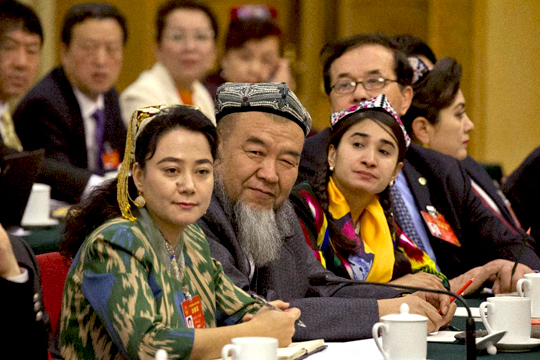Beijing, Mar 13: China's ruling Communist Party is hardening its rhetoric on Islam, with top officials making repeated warnings about the spectre of global religious extremism seeping into the country and the need to protect traditional Chinese identity.

Shaerheti Ahan, a top political and legal affairs party official in Xinjiang, today became the latest official from a predominantly Muslim region to warn political leaders gathered in Beijing for this month's National People's Congress about China becoming destabilised by the "international anti-terror situation".
Over the past year, President Xi Jinping has directed the party to "Sinicise" the country's ethnic and religious minorities, while regional leaders in Xinjiang, home to the Uighur (pronounced WEE-gur) ethnic minority, have ramped up surveillance measures, police patrols and demonstrations amid an uptick in violence blamed on Islamic separatists.
Although some scholars question whether global jihadi networks have indeed penetrated the country, top Chinese officials, including those overseeing areas outside Xinjiang, are increasingly echoing certain strands of international discourse to back up claims that Islamic extremism is growing worldwide and needs to be rolled back.
Officials from Ningxia Hui Autonomous Region, which has an ethnic Hui population that is predominantly Muslim but, unlike Xinjiang, rarely sees separatist or religious violence, warned similarly this past week about the perils of Islamic extremism. Speaking at a regional meeting open to the media, Ningxia Communist Party secretary Li Jianguo drew comparisons to the policies of President Donald Trump's administration to make his point.
"What the Islamic State and extremists push is jihad, terror, violence," Li said. "This is why we see Trump targeting Muslims in a travel ban. It doesn't matter whether anti-Muslim policy is in the interests of the US or it promotes stability, it's about preventing religious extremism from seeping into all of American culture."
Wu Shimin, a former ethnic affairs official from Ningxia, said that ideological work must be strengthened in the region to promote a Chinese identity among its Hui population, the descendants of Muslim traders plying the Silk Road centuries ago.
"The roots of the Hui are in China," Wu said. "To discuss religious consciousness, we must first discuss Chinese consciousness. To discuss the feelings of minorities, we must first discuss the feelings of the Chinese people."
Mohammed al-Sudairi, a doctoral student at the University of Hong Kong and an expert on Islam in China, said the comments by Ningxia party officials reflected the increasingly anti-Islamic rhetoric that has been rolled out over the past year by the top leadership in Beijing.





Comments
Add new comment